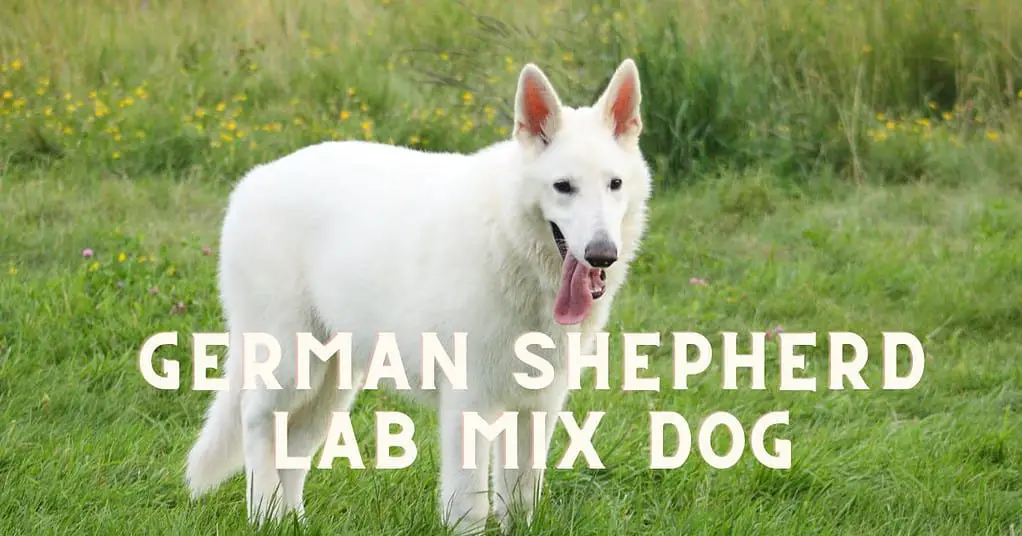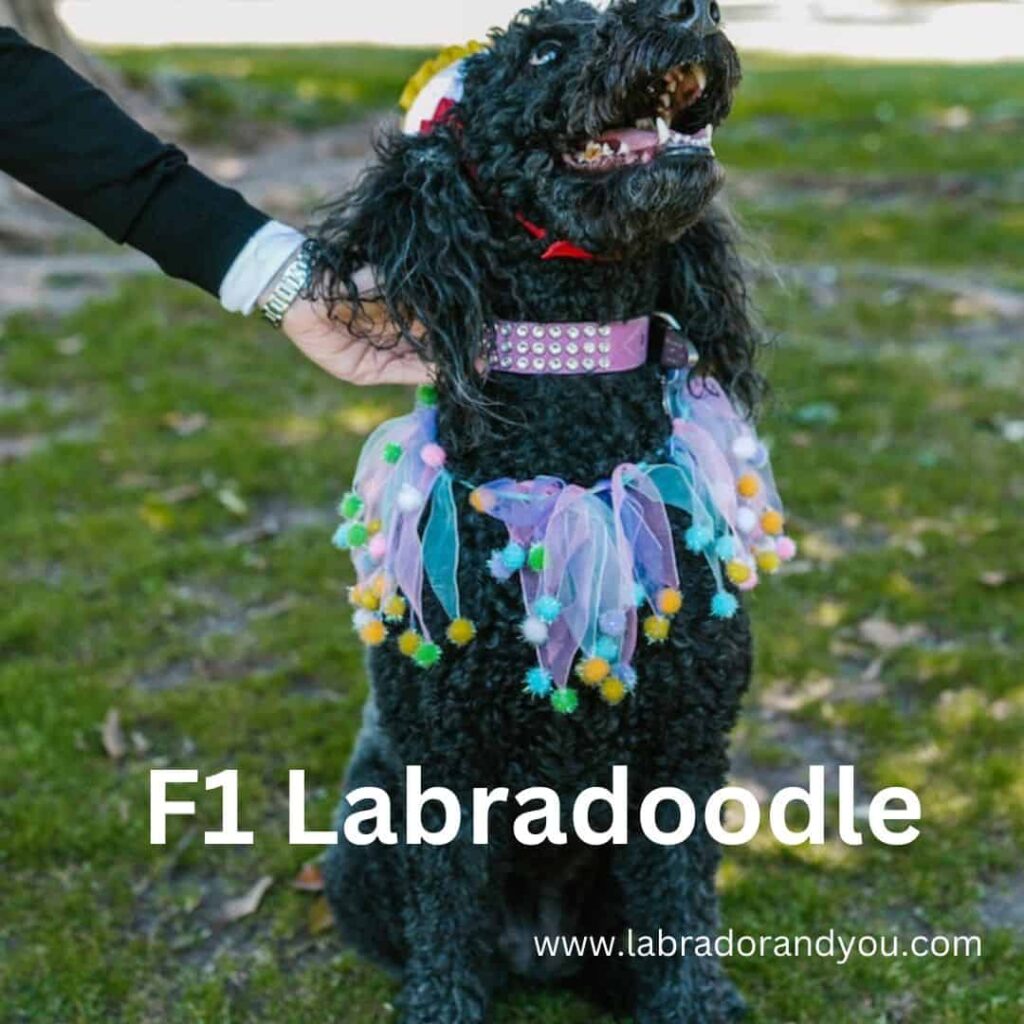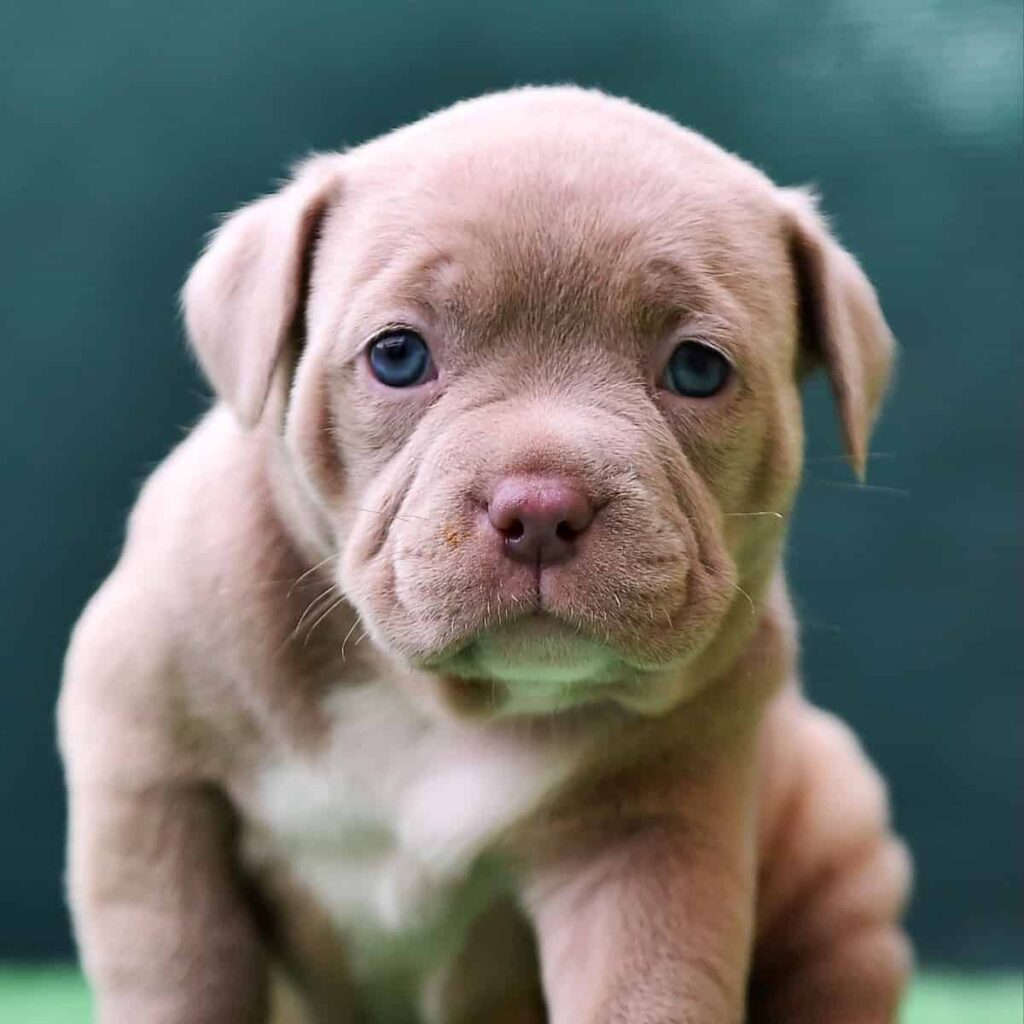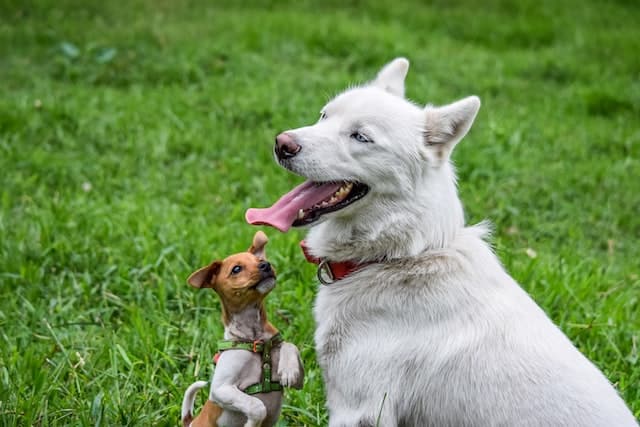Have you ever heard of F2 Labradoodles and wondered about their unique characteristics? This fluffy companion, a second-filial-generation breed from two first-generation Labradoodle parents, is known for its distinct charm.
F2 Labradoodles are the second filial generation of Labradoodles, resulting from breeding two first-generation Labradoodle parents.We will walk you through everything you should know about this special pup, including its physical attributes, health considerations, temperament, and more.
Definition of an F2 Labradoodle
An F2 Labradoodle is a second-generational crossbreed produced when two first-generation (F1) Labradoodles are bred together. This means both of its parents are F1 Labradoodles, and it has a Labrador Retriever and Poodle as grandparents on each side.
Unlike the predictability often associated with purebred dogs, an F2 Labradoodle’s genetic composition can be quite diverse. Inherently, it could hold almost 100% DNA from the Labrador or Poodle lineages; however, most typically possess roughly equal parts of both breeds’ genetic material.
The variability in this generation also extends to their appearance—they may resemble Labs, Poodles, or some combination of the two.
What does F2 mean?
In the world of designer dog breeds, “F2” refers to the second filial generation. This term is used in genetic science and indicates that both parents of a puppy are from F1 or first-generation breeding.
An F2 Labradoodle has pedigrees consisting of two first-generation Labradoodles as parents. There’s a more significant potential for genetic variation with F2s since they could inherit any traits from their lineage combination, making them less genetically predictable than their ancestors.
Each offspring may capture distinct characteristics, including appearance (size, build, color), temperament, and coat type (from short shedding hair types to long, curly, non-shedding coats).
Ensuring high-quality breeders offer healthier pups often involves understanding this intricacy within generational differences in mixed-breed dogs like our lovable Labradoodles.

Characteristics of F2 Labradoodles
F2 Labradoodles have a wide range of physical appearances, health profiles, and temperaments.
Physical appearance
This breed has a unique aesthetic spectrum. Bred from two first-generation Labradoodles, the F2 generation can exhibit wide variation in looks resembling a Poodle, Labrador, or anything in between.
Their size and build are no exception, with potential diversity similar to their parents. It’s even possible for their coat type to vary significantly within the same litter.
One might have short, shedding fur, while another sport long, curly locks —a key distinctive feature of poodles—adding another layer to their intriguing genetic puzzle.
Health profile
F2 Labradoodles have a varied health profile, as they can inherit genes from Labrador Retrievers and Poodles. While the second generation may be protected from some recessive genetic diseases, they are still susceptible to specific health conditions.
Common health issues in Labradoodles include hip dysplasia, elbow dysplasia, allergies, ear infections, exercise-induced collapse, and sebaceous adenitis.
F2 Labradoodle owners must be aware of these potential health concerns and take proactive measures such as regular vet check-ups and proper grooming to ensure their dogs’ well-being.
It is crucial to find a reputable breeder who conducts appropriate genetic testing on their breeding stock to minimize the risk of inherited disorders in F2 Labradoodles.

Temperament
F2 Labradoodles have a temperament that is a blend of their Labrador Retrievers and Poodle ancestors. They are known for being energetic, intelligent, and people-focused dogs.
With proper socialization and training, F2 Labradoodles can be great companions for active households.
These dogs thrive on human interaction and enjoy participating in activities with their owners. While each F2 Labradoodle has a unique personality, they generally exhibit traits like friendliness, playfulness, and loyalty.
It’s important to note that factors such as early socialization, training, neuter status, and exercise can influence the overall temperament of an F2 Labradoodle.
The Hypoallergenic Nature of F2 Labradoodles
F2 Labradoodles are often sought after for their hypoallergenic nature, making them a popular choice for individuals with dog allergies.
While no dog breed can truly be “hypoallergenic,” F2 Labradoodles have a higher chance of having non-shedding and low-allergy coats due to the Poodle genetics in their background.
The Poodle’s curly and dense fur has less tendency to shed dander, which is the primary allergen causing allergic reactions in humans. However, individual reactions vary, and some people may still experience allergies despite the perceived hypoallergenic qualities of F2 Labradoodles.
While F2 Labradoodles may inherit these desirable coat traits from their Poodle ancestors, they can also inherit a wide range of coat types from both sides of their genetic lineage.
Some F2 Labradoodles might have shorter hair or even exhibit shedding tendencies more akin to Labrador Retrievers than Poodles. As such, potential owners should consult with reputable breeders who can provide accurate information about specific puppies’ coat characteristics before making any commitments.
In summary, while F2 Labradoodles are more likely to have non-shedding and low-allergy coats than other generations of Labradoodles or mixed-breed dogs, individual allergies are not guaranteed.
Comparing F2 Labradoodles with Other Generations
Discover the critical differences between F2 Labradoodles and other generations, and determine which one might be the perfect fit for your family.
F1 vs F2 Labradoodles
Understanding the differences between F1 and F2 Labradoodles is crucial in deciding which generation will make the best pet for your family.
| F1 Labradoodles | F2 Labradoodles |
| An F1 Labradoodle is a first-generation Labradoodle created by breeding a Labrador Retriever with a Poodle. | An F2 Labradoodle has two first-generation Labradoodle parents and a Lab and Poodle grandparent on each side. |
| F1 Labradoodles have physical characteristics and temperament traits that are a blend of their Poodle and Labrador parents. | Physical appearance and temperament can vary widely. |
| F1 Labradoodles often possess a coat that mixes the Poodle’s curls and the Labrador’s short, straight hair. | The F2 Labradoodle’s coat could turn out short and shedding rather than long and curly, depending on the genetic lottery. |
| F1 Labradoodles are generally healthy dogs, but like any breed, they’re susceptible to certain health issues common in both Labs and Poodles. | F2 Labradoodles may be protected from some recessive genetic diseases, but they can still carry and pass on genes for conditions like hip dysplasia, allergies, and ear infections. |
Common traits in different Labradoodle generations
Labradoodles come in various generations, each with its unique traits. While F1 Labradoodles are known for their hybrid vigor and diverse coat types, F2 Labradoodles inherit a mix of genes from two first-generation Labradoodle parents.
This results in even more genetic variation, making their characteristics unpredictable. Some common traits found across different Labradoodle generations include energetic personalities, intelligence, and a strong bond with their owners.
Specific breed-specific traits can skip a generation in Labradoodles. So if you’re considering an F2 Labradoodle, be prepared for surprises regarding appearance and temperament.

Tips for Finding F2 Labradoodle Puppies for Sale
Looking for an F2 Labradoodle puppy? Here are some tips to help you find the perfect furry companion.
Identifying reputable breeders
Finding a reputable breeder is crucial when looking for an F2 Labradoodle puppy. Here are some key factors to consider:
Research Breeders Thoroughly:
Take the time to research and gather information about different breeders in your area or those who ship puppies. Look for their reputation, customer reviews, and any red flags.
Visit The Breeder In Person:
Schedule a visit to the breeder’s facility or home. Observe how they interact with their dogs and puppies. Ensure that the environment is clean and well-maintained.
Ask For Health Clearances:
A responsible breeder will have health clearances for both parent dogs, indicating that they have been tested for common genetic conditions such as hip dysplasia, eye disorders, and skin conditions.
Check Pedigree Information:
Reputable breeders maintain proper lineage records of their breeding dogs. They can provide detailed information about the parentage of the F2 Labradoodle puppies.
Assess Socialization Efforts:
A reputable breeder will prioritize socializing their puppies from an early age. Ask about their socialization techniques and experiences introducing puppies to different environments, people, and other animals.
Provide Ongoing Support:
A reputable breeder will support you even after you take your F2 Labradoodle puppy home. They should be available to answer any questions or concerns you may have throughout your dog’s life.

Understanding generational differences
To understand the generational differences in Labradoodles, it’s essential to consider the various generations of Labradoodle breeding. Here are some key points to keep in mind:
F1 Labradoodles:
The first generation of Labradoodles, or F1, is the result of crossing a Labrador Retriever and a Poodle. They have 50% Labrador DNA and 50% Poodle DNA.
F2 Labradoodles:
The second filial generation, F2, comes from two F1 Labradoodle parents. Each parent is an F1 Labradoodle with a mix of Labrador and Poodle genetics.
Genetic Variation:
Compared to F1 Labradoodles, F2 Labradoodles have more potential for genetic variation. While statistically, most F2 Labradoodles will be close to 50% Labrador and 50% Poodle. They can inherit any combination of traits from their grandparents.
Appearance:
One significant difference between generations is the variation in appearance. Due to the mixed genetic heritage in F2 Labradoodles, their physical appearance can vary widely.
Some may closely resemble a Labrador Retriever, while others may take after the Poodle side or exhibit a blend of both breeds’ characteristics.
Size, Build, And Color:
Just like appearance, the size, build, and color of F2 Labradoodles can also differ greatly. There is no standard expectation for these traits among this generation.

Coat Type:
The coat of an F2 Labradoodle can also display varied characteristics. While some may have long, curly coats similar to their Poodle ancestors, others might inherit short hair that sheds more like a Labrador Retriever.
Hypoallergenic Nature:
No evidence suggests that F2 Labradoodles are inherently more hypoallergenic than other dog breeds. While some individuals may have fewer allergenic reactions due to their Poodle heritage, it’s not guaranteed for all F2 Labradoodles.
Genetic Disease Carriers:
Although F2 Labradoodles may be protected from certain recessive genetic diseases by having two generations of mixed breeding, they can still carry and pass on genes for specific conditions.
Responsible breeders will conduct appropriate health testing to minimize the risk of these inheritable diseases in their breeding lines.
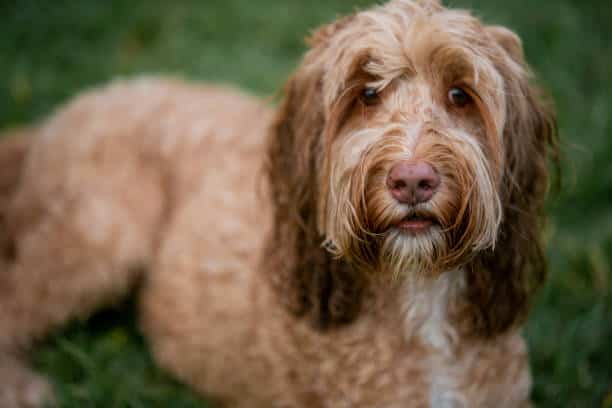
Deciding if an F2 Labradoodle is Right for You
Deciding if an F2 Labradoodle is the right dog for you requires careful consideration of your lifestyle and preferences. These dogs are a mix of two first-generation Labradoodles, resulting in many potential traits and characteristics.
If you enjoy variety and are open to surprises, an F2 Labradoodle could be a great match. Remember that their appearance can vary greatly, from resembling a Labrador Retriever to looking like a Poodle or anything in between.
F2 Labradoodles come in different sizes, builds, colors, and coat types. Their coats may not necessarily be hypoallergenic, as some individuals may still shed despite being mixed with Poodles.
However, these dogs share similar temperamental traits with Labs and Poodles – they tend to be energetic, intelligent and focused on people.
Before bringing home an F2 Labradoodle puppy or adult dog into your family, always research reputable breeders who prioritize health testing.

FAQs
What Is An F2 Labradoodle?
An F2 Labradoodle is the second generation of Labradoodles bred from two first-generation Labradoodles. This means that both parents are a mix of Labrador Retriever and Poodle.
How Does The Temperament Of An F2 Labradoodle Differ From Other Generations?
The temperament of an F2 Labradoodle can vary depending on the specific characteristics inherited from their parent breeds. Generally, they tend to be energetic, friendly, intelligent, and good-natured like their parent breeds.
Are There Any Health Concerns Specific To F2 Labradoodles?
Due to increased genetic variation, F2 Labradoodles may have a higher chance of developing specific health issues than earlier generations. However, responsible breeders will screen their breeding dogs for common health problems such as hip dysplasia and eye conditions to minimize these risks.
What Is The Difference Between An F1 And An F2 Labradoodle?
- F1 Labradoodles are the first generation of crossbreeds between a Labrador Retriever and a Poodle. They are 50% Labrador and 50% Poodle.
- F2 Labradoodles are the second generation of crossbreeds between two Labradoodles. They are 25% Labrador, 50% Poodle, and 25% other Labradoodle.
Can I Predict The Coat Type Of An F2 Labradoodle?
No, you cannot predict the coat type of an F2 Labradoodle with certainty. It is possible for an F2 Labradoodle to have any of the following coat types:
- Straight
- Wavy
- Curly
The curlier the coat, the more likely the Labradoodle will be hypoallergenic. However, there is no guarantee that any Labradoodle, regardless of generation or coat type, will be hypoallergenic.
Are F2 Labradoodles Hypoallergenic?
Some F2 Labradoodles may be hypoallergenic, but there is no guarantee. The curlier the coat, the more likely the Labradoodle will be hypoallergenic. However, even a curly-coated Labradoodle may still shed some dander, triggering allergies in some people.
Do F2 Labradoodles Have More Health Issues Than Other Generations?
F2 Labradoodles are not more likely to have health issues than other generations of Labradoodles. However, they may be more likely to inherit certain health conditions from their Labrador Retriever parent, such as hip dysplasia or elbow dysplasia.
How Long Do F2 Labradoodles Typically Live?
F2 Labradoodles live for 10-12 years.
What Are The Common Personality Traits Of F2 Labradoodles?
F2 Labradoodles are typically intelligent, affectionate, active, and energetic dogs. They are good with children and other pets.
Are F2 Labradoodles Good With Children And Other Pets?
Yes, F2 Labradoodles are generally good with children and other pets. They are friendly and playful dogs that enjoy being around people.
Are There Any Specific Exercise Requirements For F2 Labradoodles?
F2 Labradoodles require a moderate amount of exercise. They should be walked for at least 30 minutes each day. They may also enjoy playing fetch, swimming, or other activities that allow them to burn off energy.
Author Profile
- Site Owner And Dog Lover
-
Aritra, the founder of Labradorandyou.com, is a lifelong dog lover whose passion ignited for Labradors for their loyalty and intelligence. With extensive research and personal experiences, Aritra has become a Labrador expert, offering a rich resource on the breed. Labradorandyou.com provides reliable, timely, and evidence-based information, including Labrador-specific product reviews, training techniques, and care tips.
Labradorandyou.com was born out of Aritra's passion and his desire to share his profound knowledge about the breed. The site serves as a comprehensive resource, offering a wealth of up-to-date information for Labrador owners and enthusiasts alike
Also by the author
-
 Lab-TypesNovember 17, 2023Old Dog Seizures: Causes, Symptoms, and Treatment Options
Lab-TypesNovember 17, 2023Old Dog Seizures: Causes, Symptoms, and Treatment Options
-
 Lab-TypesNovember 17, 2023Why Is My Dogs Poop Yellow? 8 Reasons & Solutions
Lab-TypesNovember 17, 2023Why Is My Dogs Poop Yellow? 8 Reasons & Solutions
-
 ReviewsNovember 17, 2023The Only Hill’s Science Diet Review You Need To Read
ReviewsNovember 17, 2023The Only Hill’s Science Diet Review You Need To Read
-
 Lab-TypesNovember 17, 2023How To Adopt An Emotional Support Dog?
Lab-TypesNovember 17, 2023How To Adopt An Emotional Support Dog?
